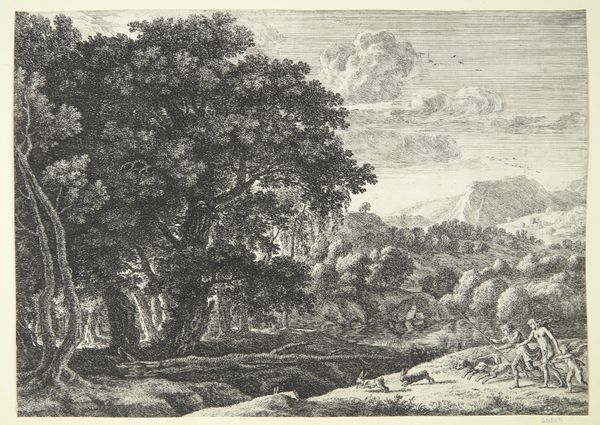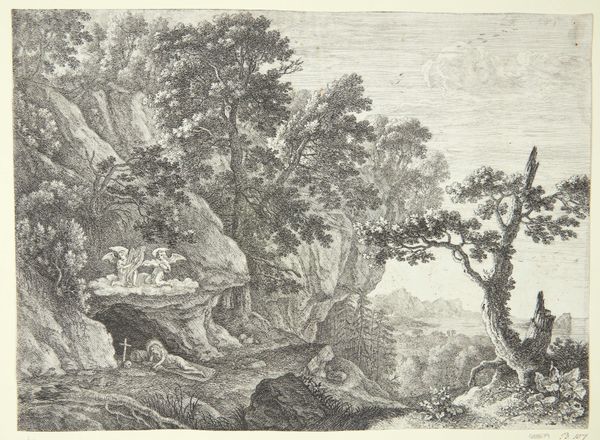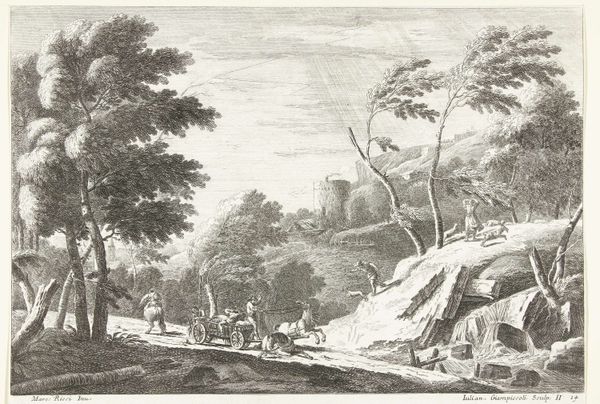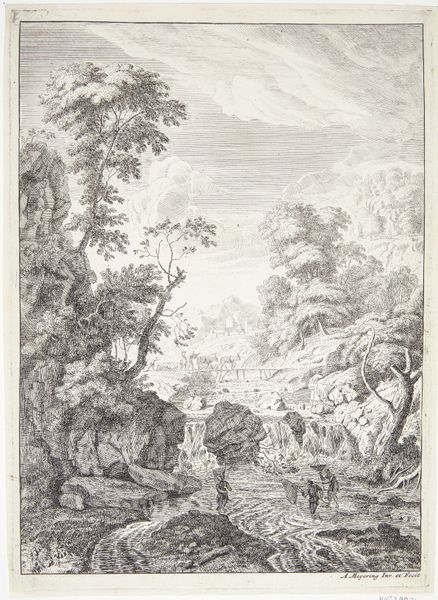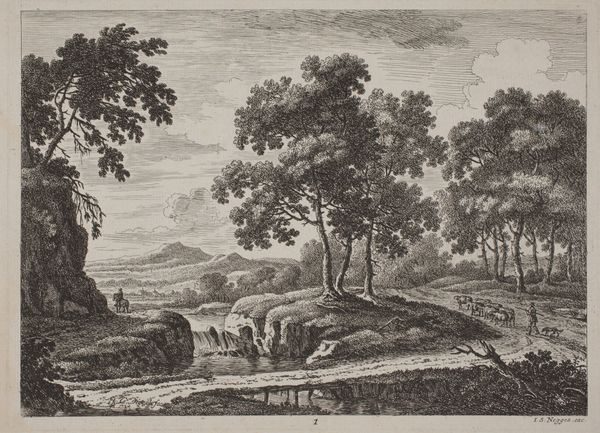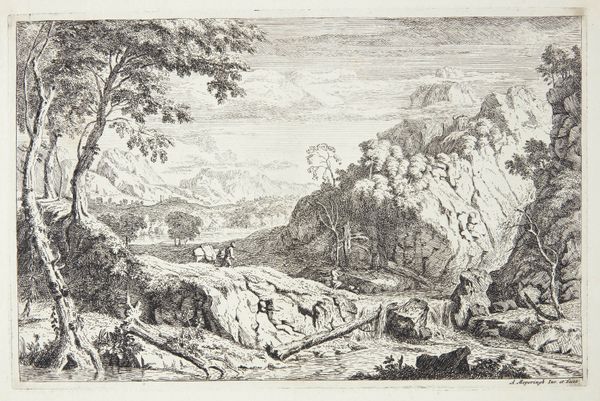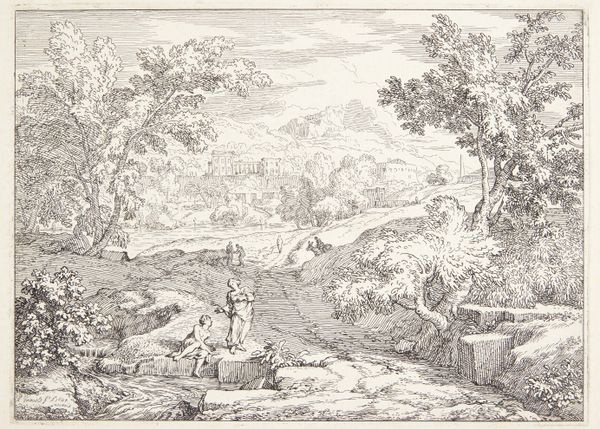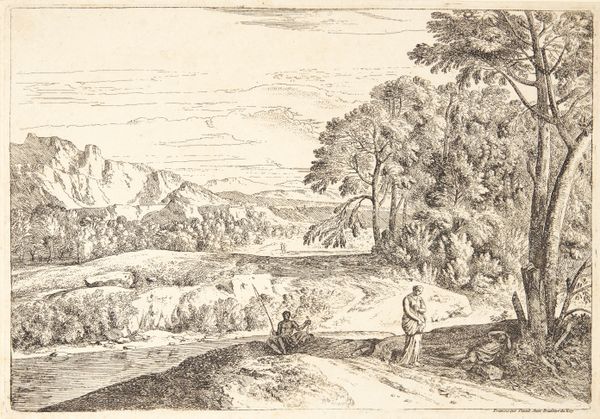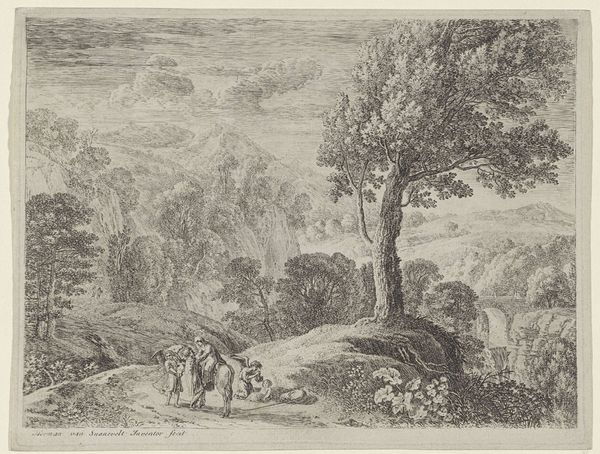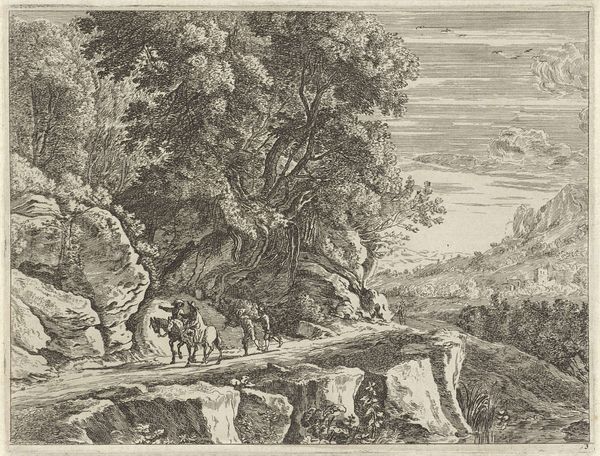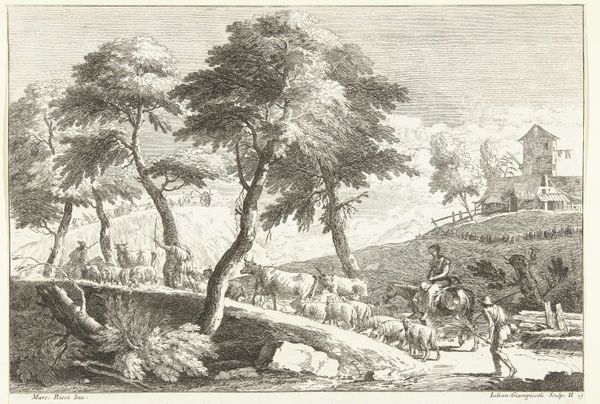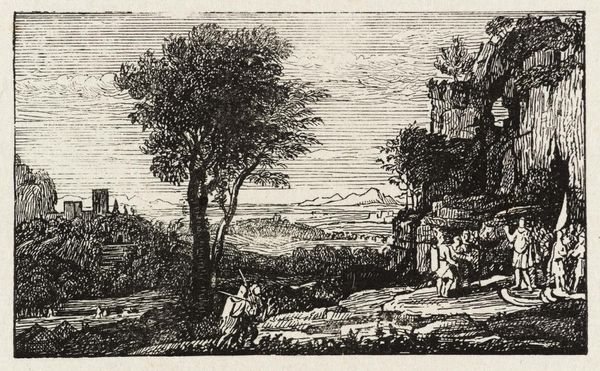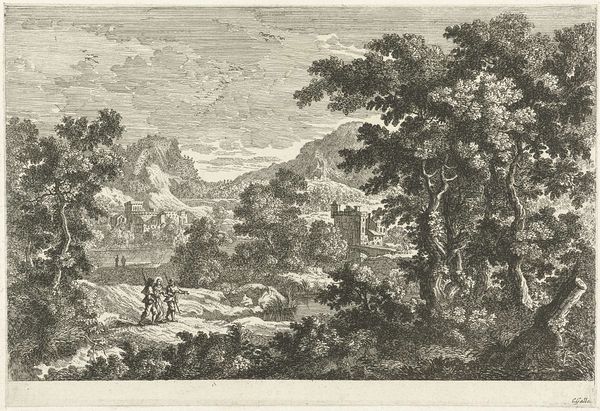
print, etching
#
baroque
#
dutch-golden-age
# print
#
etching
#
landscape
#
figuration
Dimensions: 170 mm (height) x 272 mm (width) (bladmaal)
This landscape with two riders was made by Herman van Swanevelt, using etching, a printmaking technique that democratized the art world of his time. Here, a metal plate, likely copper, would have been coated with a waxy, acid-resistant substance called a ground. The artist then scratched an image into this ground, exposing the metal. Dipped in acid, the exposed lines would be eaten away, creating grooves. Ink was then forced into these lines, the surface wiped clean, and the image transferred to paper under high pressure. This method allowed for the relatively quick and easy reproduction of images. It also had an immediacy that appealed to artists, making it a favorite medium for rapid, expressive mark-making. Consider how the etched lines bring to life the intricate textures of the foliage, rocks, and sky, constructing a romantic vision of the landscape. Etching's accessibility meant that artists could reach a wider audience, independent of wealthy patrons, reflecting a shift in the economic structures of the art world. The beauty lies not just in the image, but also in the process that brought it into being.
Comments
No comments
Be the first to comment and join the conversation on the ultimate creative platform.
